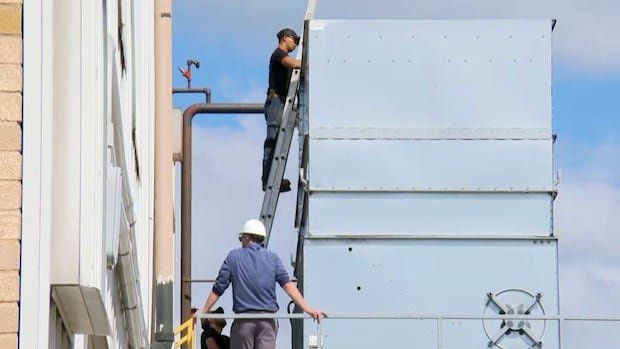Another individual has passed away due to an outbreak of legionnaires’ disease in London, Ontario, bringing the total number of deaths from the city’s second outbreak in two years to five. This development coincides with a London-based legal firm initiating a class-action lawsuit aiming to secure over $86 million in damages from the company believed to be the source of the outbreak.
The lawsuit, filed by Siskinds LLP at the Ontario Superior Court of Justice, alleges negligence on the part of Sofina Foods in maintaining the cooling tower at its east London processing plant. This negligence is said to have led to an outbreak of legionnaires’ disease that resulted in five fatalities and over 100 people falling ill.
According to Linda Visser, a partner at Siskinds, individuals affected by the outbreak have suffered severe injuries, with some requiring hospitalization, including one individual who was in a medically induced coma for weeks.
The recent outbreak was declared in early July and continues to affect the area, despite health officials from Middlesex-London Health Unit pinpointing Sofina Foods as the likely source. The outbreak has led to 96 hospitalizations, with four individuals currently receiving treatment.
It has been established by public health authorities that the legionella bacteria, which causes legionnaires’ disease, thrives in warm, moist, and stagnant environments like cooling towers. Legionellosis, ranging from mild Pontiac fever to severe legionnaires’ disease, can occur when these bacteria are inhaled in aerosolized form.
The lawsuit filed by Siskinds seeks more than $86 million in damages from Sofina Foods, including compensatory and punitive damages. The claim also outlines various forms of compensation for affected individuals, including health-care costs and legal expenses, and holds Sofina accountable for the outbreak and resultant harm.
The lawsuit highlights the case of Justin-Eric Frank Serratore-Pimental, who was diagnosed with legionnaires’ disease, double pneumonia, and sepsis after being rushed to the hospital with severe symptoms. The strain of legionnaires’ disease found in Sofina’s cooling tower reportedly matched the strain that affected Serratore-Pimental.
Siskinds is urging those impacted by the outbreak to come forward, categorizing them into two groups – the injury class and the family class. The injury class includes individuals exposed to legionella bacteria near the facility during specific periods, while the family class encompasses relatives of those in the injury class.
While regulations mandating registration and close monitoring of cooling towers are not universally enforced in Ontario or locally, Siskinds argues that Sofina had a responsibility to ensure the tower’s cleanliness and monitoring. The lawsuit also alleges that Sofina failed to implement a water safety protocol and respond adequately to health unit directives regarding the source of the outbreak.
In response, Sofina has mentioned its ongoing cooperation with health authorities and its adherence to recommended protocols. The company asserts that immediate actions were taken upon identifying the issue, with the tower being brought back online following cleaning and approval from the health unit.
The lawsuit’s acceptance as a class action remains uncertain, pending court deliberation.


